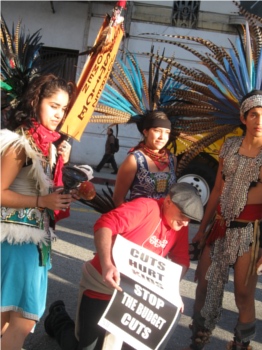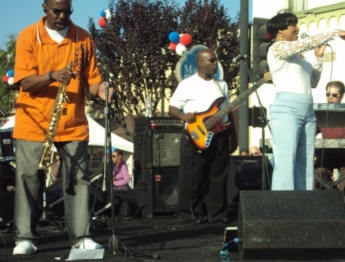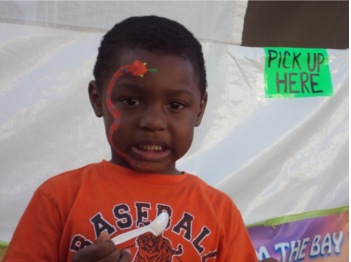
Even if he wanted to add a course he hadn’t registered for prior to the start of the semester, Casanova said he was “pretty much guaranteed” to get into the class.
Four years later, the philosophy and religion double major still has a two semesters to go before he has enough credits to transfer to a four-year university to complete his bachelor’s degree.
Chaffey has cut the number of sections it offers per course in order to stay afloat despite dramatic state budget cuts.
“I’ll get two or three [classes] and then I’ll try to add but that’s pretty much a jungle because you have 30 or 40 people trying to get a class and there’s only three or four spaces left,” Casanova said. “The budget’s all messed up. The priority of the government is wrong … the greatest goal should be education.”
Casanova joined thousands of parents, students, and educators in Los Angeles in Pershing Square on Thursday to rally against potential teacher lay offs and a proposed $2.4 billion cut to K-12 schools and $97.5 million cut to community colleges.
Cuts to the University of California system have caused tuition to rise 61 percent in five years. That percentage is 68 percent for the California State University system.
The March 4 Day of Action originated from an October education conference held at UC Berkeley and morphed into a statewide movement.
Thursday’s event precedes a 48-day march from Bakersfield to Sacramento, which kicks off March 5 and concludes with a rally on the steps of the state capitol April 21 to lobby legislators to support education
On Thursday, chants of “keep public education free, no cuts, no fees,” and “hey, hey, ho ho, budget cuts have got to go” punctuated the march as demonstrators walked shoulder-to-shoulder from Pershing Square to a cluster of government buildings located on Spring Street.
Walking alongside several of his students, Central Los Angeles High School #9 history teacher Kyle Laughlin said his arts-centered campus will “really feel the cuts.”
‘I’m here to support arts programs across the state and my students,” he said. “They deserve better.”
Parent Alana Estrada, who has a kindergartener at Wilton Place School, held a sign that read, “I thought mom said ‘education is the only thing no one can take away from you.’”
“We’re here to …send a message to Sacramento that this is unacceptable,” she said. “Everyone has the right to an education.”
Photo credit: Ariel Edwards Levy
A CRISIS OF PRIORITIES – March 4 Day of Action, Downtown Los Angeles – 2010
















